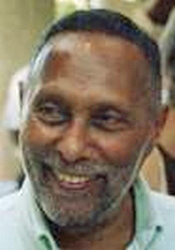Active Audience Theory argues that media audiences do not just receive information passively but are actively involved, often unconsciously, in making sense of the message within their personal and social contexts. [1] Decoding of a media message may therefore be influenced by such things as family background, beliefs, values, culture, interests, education and experiences. Decoding of a message means how well a person is able to effectively receive and understand a message. [2] Active Audience Theory is particularly associated with mass-media usage and is a branch of Stuart Hall's Encoding and Decoding Model.
Contents
- Related Theories and Models
- Encoding/Decoding Model
- Uses and gratifications theory
- Effects traditions
- References
- External links

Stuart Hall said that audiences were active and not passive when looking at people who were trying to make sense of media messages. Active is when an audience is engaging, interpreting, and responding to media messages and are able to question the message. Passive is when an audience accepts a message without question and by doing so would be directly affected by it. [3] Stuart Hall in his work, Encoding and Decoding in the Television Discourse (1973), greatly emphasized the relationship of the sender and receiver while looking at various factors of how the message is interpreted. Hall claims that the audience is what dictates whether a message is successful or not and found that an audience is able to alter the meaning of a message to support the social context they are in. As a result, Hall came up with the conclusion that the message encoded by the sender is not always going to be the message that will be decoded by the audience, [4] see Encoding/decoding model. Encoding is what allows a person to be able to understand a given message, while decoding is how well a person is able to understand the given message when received. Hall emphasizes the fact that even though the sender of a message may feel it will be interpreted clearly, the interpreted message is dependent on how the audience understands the given message. [4]
Active audience theory is seen as a direct contrast to the Effects traditions, however, Jenny Kitzinger, professor of Communications at Cardiff University, argues against discounting the effect or influence media can have on an audience, acknowledging that an active audience does not mean that media effect or influence is not possible. [5] Supporting this view, other theories combine the concepts of active audience theory and the effects model, such as the two-step flow theory where Katz and Lazarsfeld argue that persuasive media texts are filtered through opinion leaders who are in a position to 'influence' the targeted audience through social networks and peer groups.